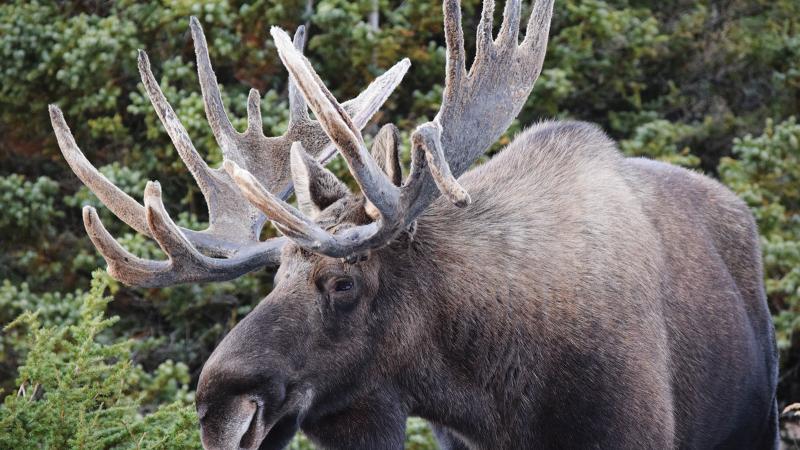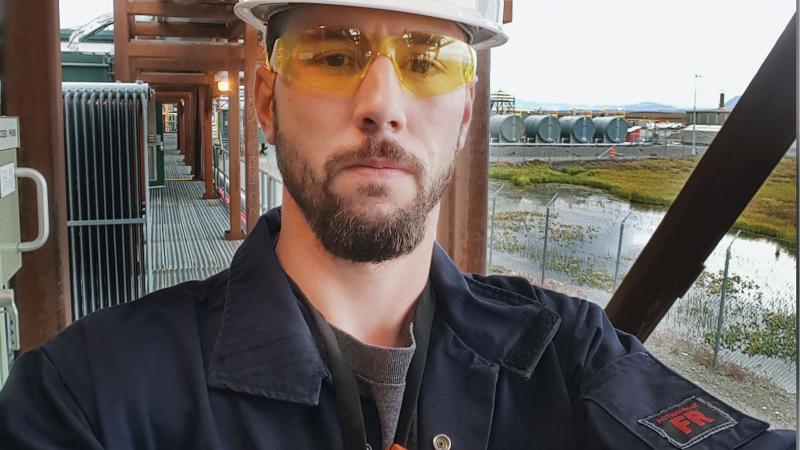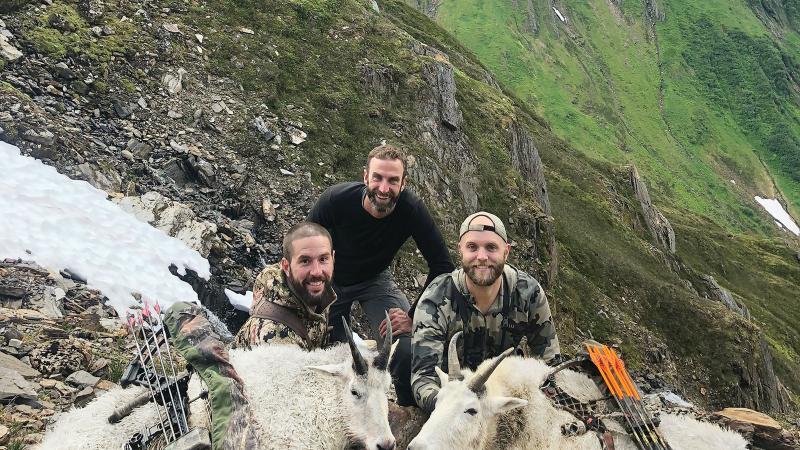Penn College Magazine Fall 2020, Volume 29, Number 2
Friday, August 27, 2021
Building automation technology student Brian S. Watkins confidently maneuvers through the Career Fair crowd at Pennsylvania College of Technology. It’s the fall semester of his senior year, so he is comfortable navigating the maze created by the scores of employers squeezed into Bardo Gymnasium for the biannual event.
His destination is the booth of a Fortune 100 company. He targets the well-known conglomerate because building technologies is one of its core businesses. Its technology is used in about 10 million buildings throughout the world.
The path leading to the company’s two representatives eventually clears. He approaches the table and introduces himself. The opportunity to present his offer is at hand.
“I’ll work for you if you get me a job in Alaska,” the student declares.
The officials from Honeywell International glance at each other before breaking into a laugh.
Eleven years later, Watkins is the one laughing.
The 2010 graduate moved to Anchorage, Alaska, to work for Honeywell as a building automation technician shortly after earning his degree. Thanks to his education and skill, Watkins is a project manager/field service supervisor for the company, responsible for clients scattered over an area bigger than Texas, California and Montana combined.
“The Honeywell reps thought I was joking about wanting to work in Alaska,” Watkins recalled with a smile. “When they realized I was serious, they said, ‘Who would want to work there?’ I said, ‘Me!’”
The outdoorsman had explored Alaska two summers earlier and fell in love with the Last Frontier’s jaw-dropping beauty and vast wilderness. The remote landscapes offered a welcome contrast to his native Hatboro, 17 miles from Philadelphia. Alaska is 663,000 square miles larger than the City of Brotherly Love with half the population (728,903).
“When I got back to school, I was like, ‘I have to go out West.’ Alaska was my spot with all the hiking, fishing and hunting,” Watkins said.
Honeywell granted his wish. The company representatives at the Career Fair forwarded Watkins’ resume to the Anchorage office, which offered him a position a few months later. Two weeks after graduating with his bachelor’s degree, Watkins tossed a few suitcases and a hunting rifle in his truck and drove 4,500 miles to a new life.
“I Googled what it was like to live in Anchorage, and one of the things that came up said not to fall asleep outside because you will get hypothermia and die,” he laughed.
At work, Watkins started at the bottom of the branch because he possessed the least field experience. However, it didn’t take long to change his status.
“The degree that I came with put me a step ahead of where anybody else would have been. We worked on Honeywell controls in class,” he said. “I caught my stride with the company right away and moved up the ranks.”
Today, he oversees the Alaska branch, working with four field technicians, an engineer, a sales representative, and a plethora of subcontractors and clients. Days are spent developing and implementing automation systems throughout the massive state. Watkins’ time is split among customer relations, project management, sales and engineering duties.
“I would 100% not be where I am today without my Penn College degree,” he said. “Not only do you get the hands-on experience with controls and strategy, but the curriculum includes writing, reading and math. You develop a sense of professionalism. Once you bring that to the field, you’re way above everybody else. I think what has made me more successful is that I can go in and talk to people and build relationships. I work directly with security managers, building managers and government officials.”
Soft skills are as important as technical acumen, according to Todd S. Woodling, assistant professor of building automation/HVAC electrical. A former electrical field engineer and engineering manager, Woodling has headed the Penn College program since 2004.
“The job is unique in that you, as the engineer, get to interface with many disciplines such as general, mechanical and electrical contractors, as well as numerous trades related to buildings,” he said. “Your main interface is the building customer in dealing with scheduling, commissioning, training, operation and service.”
Woodling defines building automation as the automatic centralized control of a building’s interrelated systems – including HVAC, electrical, lighting and security – through a computer-based management system that can be operated remotely. Common automation objectives include greater efficiency of building operations, enhanced security and reduced energy consumption.
“We can go to spots that have as few as 15 people. We can be 70 miles inside the Arctic Circle and dealing with 40-below conditions.”
In achieving those goals, Watkins compares himself to a music conductor. Whereas a conductor uses a baton to direct a cohesive sound from an orchestra and its menagerie of instruments, he employs a laptop to connect, control and monitor myriad systems. Proper operation of all interrelated components is music to Watkins’ ears, even when he can’t feel his fingers or toes.
Some of Honeywell’s customers are in the sparsely populated northern third of Alaska, home to the Arctic Circle and its notorious bone-chilling winter temperatures. Snowmobiles and puddle-jumper planes are relied on to reach clients in such rugged territory.
“We can go to spots that have as few as 15 people. We can be 70 miles inside the Arctic Circle and dealing with 40-below conditions,” Watkins said. “Logistics is probably the most challenging aspect. There can be just a few flights a week to a region, and if you forget a bolt, you can be delayed for a week. It can get stressful.”
But often that stress results in success. For proof, Watkins points to a hospital in Kotzebue, a community of about 3,200 in northwest Alaska.
The remote location, escalating service prices and past performance issues made for a tenuous relationship between Honeywell and the hospital. When he became manager, Watkins developed a connection with key personnel at the facility and gained their trust in making incremental upgrades. He strategized with stakeholders for a few years before recently overseeing the retrofitting of the hospital’s HVAC and fire systems.
“I can work all the way through the end goal to create a turnkey solution that makes the customer happy,” Watkins said. “At the end of the day, you build friendships, as well. And you enjoy your job.”
In high school, Watkins didn’t know what building automation was. He wasn’t even aware of Penn College until a friend in his career and technical education program suggested a visit. The classmate had recently applied to the college and believed Watkins’ hands-on skills would be a match for the school’s electrical major.
Watkins had worked a bit in construction and liked the electrical aspect of jobs. Vocational classes solidified that interest, which led him to heed his friend’s advice and explore Penn College.
“I wanted to have a degree that gave you actual experience to be in the field,” Watkins said. “When I got to Penn College and toured their facilities, I was like, ‘Wow, this is impressive!’ I liked hands-on, and that’s what the college is all about.”
He planned to earn an associate degree in electrical technology, become an electrician and return to the Philadelphia area. Instead, a presentation by Woodling to the electrical students describing building automation and its career opportunities prompted him to reconsider. Watkins stayed at Penn College for four additional semesters to earn his bachelor’s degree, a decision that years later proved essential for advancing to his management role.
“The job came down to me and two other guys, and I was told straight up that they went with me because I had the degree,” Watkins said.
“It was one of the best moves that Brian made. Obtaining a bachelor’s degree opens many paths as you move forward in your career,” Woodling said. “Our building automation engineering graduates obtain in-depth skills and have a very high reputation of being able to start a job and be productive on day one.”
That’s why the demand for Penn College building automation engineering technology students is considerable. Graduates enjoy a near-100% placement rate, and more than three-fourths of students are like Watkins and commit to full-time employment several months prior to commencement.
They just don’t usually move to Alaska.
“I miss friends and family, but I don’t miss the East Coast,” Watkins said. “It’s a lot more laid back here, and there’s so much more to do in Alaska. The Alaskan lifestyle is to enjoy the outdoors. We take off more time, I would say, than on the East Coast. It’s a playground up here.”
He takes full advantage of that playground. Multiple-day hunting trips in his treasured wilderness and skating and playing hockey at one of Anchorage’s 30-plus outdoor rinks replenish Watkins for the demands of the job.
And it’s a job he expects to be at for a long time.
“My old boss was here for 34 years. Honeywell has taken good care of me. I’ll probably retire with them,” Watkins said, appropriately followed by a laugh.
Putting adventures into words
Hunting is more than a hobby for Brian Watkins. According to Watkins, it’s an obsession: one that he’s able to share with readers of two publications.
Thanks in part to Penn College.
The walls of Watkins’ home in Anchorage, Alaska, offer ample evidence of his hunting prowess. A black bear and a brown bear share space with deer, sheep, elk, moose, caribou and a musk ox. The taxidermy mounts serve as trophies from memorable hunting excursions.
“The adventure of hunting is second to none,” Watkins said. “I love to be in the animals’ natural habitat, learning about what they do and outsmarting them for survival. It’s a holy feeling to be among the animals and to be able to eat what you get.
“When I have enough meat in the freezer, I usually switch from a rifle to a bow to make it a harder challenge.”
Writing was a challenge for Watkins during his time at Penn College, despite a stellar 3.73 GPA in earning a bachelor’s degree in building automation technology. He turned a struggle into a strength after seeking assistance from the college’s Writing Center.
“The tutoring there is second to none,” he said. “I was there two or three times a week when I was writing essays. I mean, 100% I was a terrible writer, and the Writing Center helped me a lot. They taught me the fundamentals of writing and proper structure and organization.”
Today, readers of Hunt Alaska Magazine and Alaska Sporting Journal are the beneficiaries of Watkins’ refined writing abilities. He’s written about 15 stories recounting various hunting escapades for those publications. Watkins penned the cover story for the May 2020 issue of Alaska Sporting Journal. The riveting piece describes spending four springs on the Kenai Peninsula hunting a 1,200-pound grizzly that he dubbed “King Tut.” Watkins didn’t see the bear in person until the third year and finally harvested the “biggest animal he ever saw” the following spring.
“I like to focus more on the adventure and what hunting encompasses rather than the kill,” said Watkins, who spends about 45 days a year in the field.
As readers of Hunt Alaska Magazine discovered, Watkins’ hardest days in the field occurred hunting elk with his father on tiny Raspberry Island in the Gulf of Alaska. His story shares vivid details of countless challenges they overcame to take home an elk, from 7-foot seas to 60 mph winds to an Arctic swamp that “swallows you to your knees.”
“Writing is a great way to recap an adventure and relive it in your mind,” he said. “Writing the hunting articles is directly from that experience of going to the Writing Center at Penn College. I am grateful.”
So are his readers.





Share your comments
Penn College Magazine welcomes comments that are on topic and civil. Read our full disclaimer.
We love hearing from you